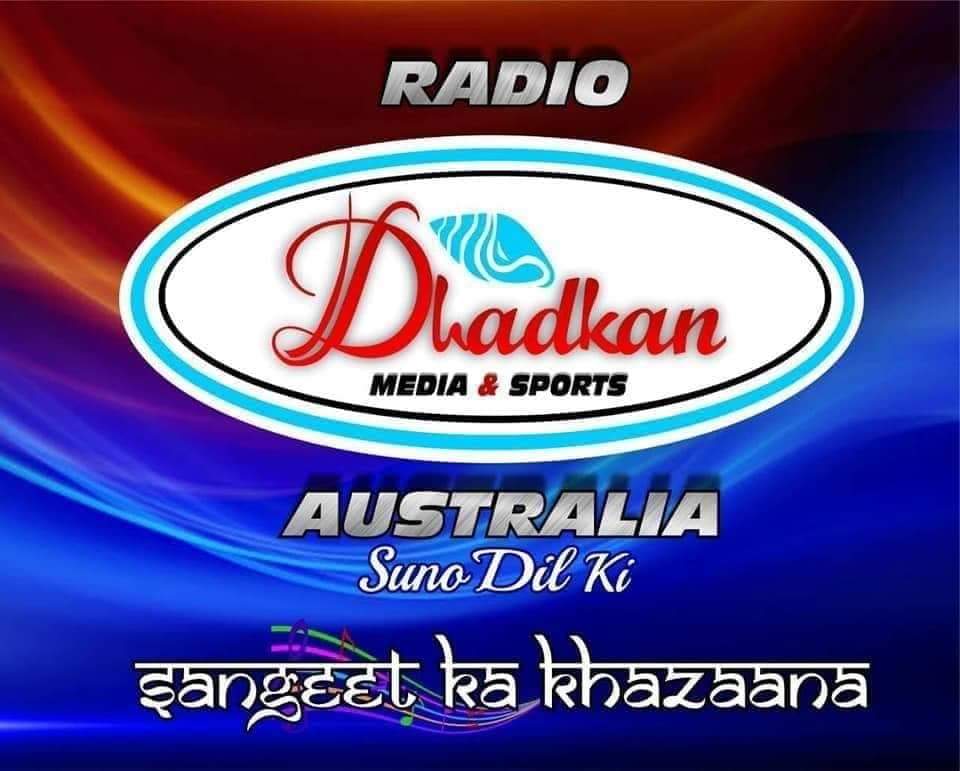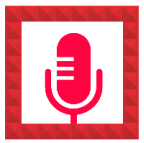The 7 Different Types of EDM Music
Written by mlinksonline@gmail.com on May 21, 2016
As a bassist, bandleader, teacher, and music copyist, I’ve worked with hundreds of singers throughout the years. Though working musicians know hundreds of tunes, singers need to have good charts in order to have their music played the way they want. I define a “good chart” as a piece of written music that effectively tells the musicians what they should play.
Written music comes in seven basic forms: chord charts, sheet music, songbooks, lead sheets, fake books, master rhythm charts and fully notated parts.
As a musician has a responsibility to play the chart before him correctly, the supplier of the chart has the responsibility of providing the right kind of chart. Knowing what type of chart to use for what kind of tune or gig is very important.
This article explains what the different types of charts are, and under what circumstances to use them. I hope you find it useful.
TYPES OF EDM MUSIC
Charts can be simple or elaborate according to the style of music and type of gig. Cover tunes are traditionally learned from recordings; classical and choral music can be found in sheet music stores as well as in various music catalogs; numerous tunes will be found in music books of all kinds; and many public libraries carry recordings and written music for your use.
The word “chart” refers to any piece of written music or any arrangement (music that has been adapted in a unique manner) of a tune. Decades ago it was strictly a “cool” slang term for a tune, but any piece of music could be called a chart these days, though a classical buff might not refer to a Mozart work as a “chart.”
Knowing what type of chart to use for what kind of tune is very important. When you’re playing a gig and someone hands you a chart — it is what it is and you either read it well or not. But, if you buy charts, have them made for you or provide them yourself, you need to know which kinds to use for which situations. Years back, while doing singer showcases, singers brought in all kinds of charts: good ones, bad ones, incorrect ones, inappropriate ones, and it was a real pain. The singers who provided the right kinds of charts got their music played the way they wanted. The singers who had the wrong kinds of charts didn’t, and weren’t very happy about it. Unless a musician already knows the specific parts, he can only play according to what’s on the chart before him. Though a good musician can improvise a good part in any style, if a specific musical line needs to be played, it needs to be written out.
As a musician has a responsibility to correctly play the chart before him, the supplier of the chart has the responsibility of providing an appropriate one.
Without getting into too many music notation specifics, here are the different kinds of charts and when they are used:
1. HOUSE
A chord chart contains the chords, meter (how the song is counted, e.g., in 4 or in 3 (like a waltz), and the form of the song (the exact order of the sections). This type of chart is primarily used when: 1. the specific musical parts are improvised or already known, but the form and chords need to be referred to, 2. to provide chords to improvise over, or 3. when a last-minute chart needs to be written, and there isn’t time for anything more elaborate.
A chord chart does not contain the melody or any specific instrumental parts to be played. To play from simple chord charts a musician basically needs to have steady time, know the chords, and improvise his part in whatever style the tune is in.
2. TECH HOUSE
Sheet music is a store-bought version of a song printed by a publisher, which contains the instrumental part, chords, lyrics, melody and form. An instrumental piece will, of course, have just the music. Sheet music is written for both piano and guitar. Guitar sheet music is in standard notation (often classical), as well as in TAB. A good piece of sheet music will always say whether it’s for piano or guitar. Most sheet music is not meant to be completely representative of the actual recording, and the actual arrangement that you’ve heard on a recording is seldom present.
Many people have experienced the frustration of getting the sheet music to a song they like, playing it, and discovering that the chords are different from the recording, and sometimes the form is too. Unfortunately that’s the way it is a lot, and it could be for a number of different reasons. To get the exact arrangement and chords, you need to do a “takedown” of the song: learn it by ear. A takedown is when you listen to a piece of music and write it down. Takedowns can range from simple chord charts to elaborate orchestral parts or anything in between. In order to do good takedowns, you need to have good ears, understand and be fluid with music notation to the complexity of the type of music you’re working with, and preferably understand music (the more the better). Having “good ears” consists of recognizing and understanding the music, whether heard on the radio, played by another musician, or heard in your head.
3. DEEP HOUSE
Songbooks are compilations of many tunes and often contain the same information that sheet music does, along with the chords and arrangement being different from the recording most of the time. Sheet music commonly has full introductions and endings, whereas songbook tunes are generally shortened to create space in the book for more tunes. Sheet music is generally written to be played on a keyboard, but songbooks come in different styles and for different instruments. They are compiled by artist, style, decade, and in various collections including movie themes, Broadway hits, etc.
Songbooks are a good reference source when other, more exact charts are unavailable. For example: I needed two movie themes for a gig once (client request). Instead of spending $8 for two tunes of sheet music, I bought a book of movie themes for $16 that contained over a hundred tunes. Sheet music and songbooks are pretty unusable at gigs because of cumbersome page turns and bulkiness; but in an emergency you use them and do what you can. If having to use sheet music or songbooks for live performance, either: 1. recopy the tune onto 1-3 pages or 2. photocopy it and tape the pages together (although, strictly speaking, this may be considered copyright infringement). Make sure to always provide a copy for each musician.
To play from songbooks and sheet music, a musician needs to be able to read the music notation, or at least improvise a part from the chord symbols, i.e., a guitar strum, bass groove, piano groove, etc., or better yet, both. A vocalist can sing the words if they know the melody, or be able to read the notated melody if they don’t know it.
4. TECHNO
Lead sheets contain the chords, lyrics and melody line of the song and are mainly used by singers, accompanists and arrangers, though they appear on the bandstand now and again. Songwriters use lead sheets to copyright their songs, and very often sheet music includes a lead sheet of the tune as a condensed version to use. Instead of having three to six pages of sheet music to turn, a lead sheet is usually one or two pages long. Lead sheets do not contain any music notation except the melody and chords, so a musician needs to know how to improvise when reading from one. A lead sheet is generally written out by a music copyist, who is someone who specializes in preparing written music. Playing from lead sheets minimally requires playing an accompaniment from the chords and understanding the form directions and symbols (the markings telling you to go to the verse or the chorus or the end, etc.) and maximally having excellent accompaniment skills and reading notation fluidly.
5. ELECTRO
A fake book is a large book of tunes that contain only the melody line, lyrics and chords. There’s no piano part, guitar part or bass part. That’s why they call it a fake book. You have to already know your parts, or improvise them in the style of the tune. Some people call that “faking it.” Faking it means to be musically adept enough to be able to follow along by ear and figure it out as you go: that’s one of the reasons for ear training. When a person’s ears “get trained”, they learn to recognize and understand the relationship of pitches and musical elements. With this understanding you can “hear” your way through tunes, even if you haven’t heard them before, you fake it. However, when you don’t hear so well, you’re really faking it!
Before there was an abundance of legal fake books on the market, there was an abundance of illegal fake books on the streets. (As of this writing, I’ve only seen a few at gigs.) Since a working musician needs to have access to a large number of tunes at gigs, musicians compiled books of hundreds of useful tunes containing only melody lines and chords. A working player doesn’t need all the notes written out, because he can improvise, so large books were made with choice tunes. Some fake books are hand copied, either by a pro copyist or casually done with pen or pencil, while others consist of cut up sheet music where all the piano parts are removed, leaving the melody and chords, all for the purpose of condensing space.
Rather than take stacks of songbooks to gigs, you pop a fake book of hundreds of choice tunes into your gig bag and off you go. A tune taking up five or six pages in songbook/sheet music form can take up a page or less when rewritten by hand or cut up, leaving only the chords and melody. Fake books are often used and I’ve seldom been at a casual where someone hasn’t had at least one.
The reason the illegal books are illegal is copyright laws. With the homemade books, nothing goes through the publishing houses that own the rights to the tunes, so neither the publishers nor the composers get paid for their use. The Catch-22 over the years has been the fact that there weren’t any good legal fake books that pro musicians could use at a gig. In a songbook of 200 tunes, maybe ten were usable. So, the players made their own, and gigging musicians lived happily ever after. But since making these books is illegal, some decades ago a few nationwide distributors were arrested and fined for copyright infringement. But you still see the illegal books on the bandstands, nonetheless.
Over the years many legal fake books have been published and are very good. There are music books for: pop, jazz, rock, country, specific artists and movie themes, and there are special wedding books with all the key music that brides like. Big sheet music stores should have them all. And recently, some of the most popular illegal fake books have been made legal. (Hooray!) The 5th Edition Real Book is an example. Filled largely with jazz tunes, the book is in the original format, but published legally as the 6th Edition Real Book.
Legal fake books are plentiful at sheet music stores, and illegal books… well, you’re on your own. Trade magazines and music union papers often advertise a wide variety of music books as well as joke books, ethnic music and other related entertainment materials. Sometimes instrument stores carry fake books as well.
Fake books are good to have, but the more tunes a musician knows, the better.
6. DEEP TECHNO
Master rhythm charts are charts designed for the rhythm section (piano, bass, guitar and drums). It is one chart that contains the general idea for everybody to play from: a sketch of the tune, a master copy of it all for each player. These charts are like elaborate chord charts with just enough specifics on them to make the music either feel and sound more like the original recording, or to provide just enough specifics to make it interesting and recognizable, leaving the rest to improvising.
Unless a tune is composed or arranged in this style to begin with, which many are, these charts are written by someone doing a takedown from a recording, or created from lead sheets or songbooks. Whereas lead sheets are primarily for the singer, master rhythm charts are primarily for the musicians. When a singer provides charts to the musicians in the band, these are the usual ones to use.
A master rhythm chart contains:
• All the chords
• Key rhythms (the main rhythms)
• Key melodic parts for the instruments
• Key lyrics for reference if desired
• Key background vocals if present
• Dynamics-how loud, how soft, etc.
• Any form, clarifying instructions and symbols needed to ensure a good performance of the tune.
All styles of popular music use master rhythm charts, and it’s common to have one along with a lead sheet for each tune when a singer is involved. Master rhythm chart reading, and writing, entails improvising fluidly in the style of the tune, and requires fluid notation reading abilities.
7. CHILL OUT
When the music needs to be extremely specific it will be fully notated. Everything that needs to be played is written on the page. What to play, when to play it and how to play it: the notes, rhythms, dynamics, and any and all notational expressions, such as tempos (how fast or slow), who cues what, etc. Most professional recording sessions and shows require fluid note reading and provide individual parts for each instrument.
LYRIC SHEETS WITH CHORDS
Though they are not written music, lyric sheets with chords deserve a mention.
Singers who play an instrument often use lyric sheets with chord symbols written above the words. For a singer/musician these are very useful, and are often used. I’ve used them myself.
Musicians reading these charts, however, can do well if they are familiar with the song, but this leaves a very large margin for error. Very often the chords are over the wrong words, or the chords are wrong or incomplete: very dicey business. Musicians like specifics.
My students use these all the time, and there are a number of Internet sites with thousands of lyric sheets you can download. For certain situations they are very handy!






Commenter 393 On May 21, 2016 at 5:19 pm
tent taciti sociosqu ad litora torquent per conubia nostra, per inceptos himenaeos. Nullam sed libero. Nunc sollicitudin diam ac dui. Nunc faucibus auctor tortor. Quisque ipsum sem, hendrerit accumsan, congue ut, porttitor ut, turpis. Sed sollicitudin, leo et condimentum tempus, massa augue dictum est, iaculis posuere nulla felis quis tortor. Pellentesque ac nisl vitae nunc porta pretium. Praesent id erat. Cras leo. Quisque eleifend metus nec lorem.
Sed sed quam non mauris aliquam rhoncus. Vestibulum ante ipsum primis in faucibus orci luctus et ultrices posuere cubilia Curae; Praesent quam turpis, dignissim et, consequat in, porttitor eget, orci. Aenean pretium, orci vel ultrices dapibus, ipsum metus lobortis ante, ac tincidunt urna erat et tortor. Mauris nisl eros, dapibus et, tristique eget, dignissim non, lacus. Fusce aliquam, turpis quis varius blandit, purus elit sollicitudin leo, vitae posuere odio odio id dui. Fusce adipiscing. Maecenas a enim eu
Commenter 394 On May 21, 2016 at 5:19 pm
m tempus molestie eros. Maecenas molestie pharetra augue. In sagittis enim vitae libero. Praesent feugiat blandit lacus. Lorem ipsum dolor sit amet, consectetur adipiscing elit. Maecenas erat lacus, sollicitudin placerat, facilisis nec, tempor nec, elit. Pellentesque iaculis urna ut leo mattis sagittis. Cras urna. Vestibulum malesuada orci eget leo.
Etiam egestas auctor sapien. Cum sociis natoque penatibus et magnis dis parturient montes, nascetur ridiculus mus. Praesent feugiat. Donec vehicula, dui nec adipiscing ultricies, lorem urna eleifend arcu, eu congue libero lectus ac lacus. Lorem ipsum dolor sit amet, consectetur adipiscing elit. Praesent pulvinar pellentesque lacus. Suspendisse urna orci, rutrum a, placerat a, suscipit a, est. Aliquam ac odio. Fusce arcu lorem, sodales et, condimentum ultrices, fringilla ut, tellus. Quisque velit justo, molestie ac, imperdiet et, vulputate semper, dolor. Phasellus laoreet, sapien in molestie gravida, velit q
Commenter 395 On May 21, 2016 at 5:19 pm
s congue commodo. Fusce dictum hendrerit dolor. Donec commodo euismod dolor. Curabitur nibh. Vestibulum ut risus. Integer laoreet, ipsum congue congue suscipit, ipsum est molestie dolor, consectetur tempus justo lectus ac mauris.
Integer vulputate molestie quam. Vestibulum et nisi. Nullam in magna quis libero posuere vestibulum. Donec mi leo, elementum ut, tincidunt at, condimentum eu, est. Donec sed nisl ac justo consectetur viverra. Nulla volutpat est vitae nisl. Nullam aliquam ipsum a arcu facilisis adipiscing. Pellentesque cursus. Cum sociis natoque penatibus et magnis dis parturient montes, nascetur ridiculus mus. Nulla gravida viverra urna.
Aenean condimentum, arcu sit amet volutpat ullamcorper, erat sapien tempor dolor, ac consectetur diam ante at nibh. Proin erat lectus, ve
Commenter 396 On May 21, 2016 at 5:19 pm
lobortis ante, ac tincidunt urna erat et tortor. Mauris nisl eros, dapibus et, tristique eget, dignissim non, lacus. Fusce aliquam, turpis quis varius blandit, purus elit sollicitudin leo, vitae posuere odio odio id dui. Fusce adipiscing. Maecenas a enim eu sem accumsan laoreet. Donec sem eros, egestas orna
Commenter 397 On May 21, 2016 at 5:19 pm
it risus, pellentesque sed, imperdiet quis, pulvinar in, odio.
Duis nulla diam, fringilla at, feugiat et, tincidunt consectetur, magna. Duis id est ac neque mollis ullamcorper. Nulla quis urna. Ut vitae nisi sit amet lectus blandit ultrices. Vestibulum ante ipsum primis in faucibus orci luctus et ultrices posuere cubilia Curae; Phasellus consectetur nunc at sapien. Ut pellentesque laoreet diam. Mor
Commenter 398 On May 21, 2016 at 5:19 pm
a
Commenter 399 On May 21, 2016 at 5:19 pm
amet, consectetur adipiscing elit. Maecenas erat lacus, sollicitudin placerat, facilisis nec, tempor nec, elit. Pellentesque iaculis urna ut leo mattis sagittis. Cras urna. Vestibulum malesuada orci eget leo.
Etiam egestas auctor sapien. Cum sociis natoque penatibus et magnis dis parturient montes, nascetur ridiculus mus. Praesent feugiat. Donec vehicula, dui nec adipiscing ultricies, lorem urna eleifend arcu, eu congue libero lectus ac lacus. Lorem ipsum dolor sit amet, consectetur adipiscing elit. Praesent pulvinar pellentesque lacus. Suspendisse urna orci, rutrum a, placerat a, suscipit a, est. Aliquam ac odio. Fusce arcu lorem, sodales et, condimentum ultrices, fringilla ut, tellus. Quisque velit justo, molestie ac, imperdiet et, vulputate semper, dolor. Phasellus laoreet, sapien in molestie gravida, v
Commenter 400 On May 21, 2016 at 5:19 pm
psum. Sed mauris. Cum sociis natoque penatibus et magnis dis parturient montes, nascetur ridiculus mus. Proin ac ipsum. Nunc vitae sapien sit amet tellus eleifend hendrerit. Phasellus orci nunc, fermentum eu, ultrices quis, dapibus vitae, lectus. Donec blandit ligula vitae justo. Quisque rutrum ante ac nisi. Sed at mi. Donec eget odio in est tempus malesuada. Donec sem. Donec tortor. In auctor purus a lectus. Nulla a leo. Curabitur velit. In et lorem. Quisque congue, lorem sed cursus ullam